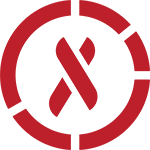Breastfeeding is widely acknowledged as the normal and unequalled method for feeding infants due to its associated health benefits, both for the infant and the mother. The World Health Organization recommends that infants are exclusively breastfed up to the completion of six months of age, with breastfeeding continuing to be an important part of the diet until the infant is at least two years old. The several health benefits associated with breastfeeding are driven by the combined action of the nutritional and bioactive components in human milk and the magnitude of the majority of the ascertained biological effects is directly dependent on breastfeeding duration. The Goals of World Health Organization is to increase at least 50% the rate of exclusively breastfeeding in the first six months in 2025. Ministry of Health said that in Indonesia, the rate of exclusively breastfeeding in the first six months is about 35,7% (2017). So far away from the WHO’s target. To support this issue, we made an air campaign about World Breastfeeding Week.
On August 1-7, we usually celebrate the World Breastfeeding Week to increase awareness about the important roles of breastmilk. As you know that social media is a platform to share everything in this era. So, we used the power of social media to share information about breastmilk. In this campaign we have reachout international Non-Government Organization, World Alliance of Breatfeeding Action, that concern on breastfeeding and breastmilk issue and also K-Radio to share informations about it. On the first August 2019, we’ve done the primer assesment in Instagram Stories that followed by 108 people. We posted some questions and saw the response of Instagram’s users about their knowledge of important role of breastmilk. Then, on August second 2019, member of CIMSA UNEJ posted a photo using the twibbon to join the campaign. More than 30 members have been posted the twibbon. On the next day, we shared a videos about the important roles of breastmilk in CIMSA UNEJ’s social media have been watched by 123 people in Instagram Tv and Youtube and. On the fourth day, we post some infography in CIMSA UNEJ’s instagram, and the next day we posted some myths and facts about breastmilk and followed by 78 people. The goal was to decrease the stigma and myth about breastmilk. On the sixth day, we had a frequently asked question with dr. Dwinarti A. Member of CIMSA UNEJ have been active to ask some question in Instagram Stories fitur. On the last day, we educated our closest person about the important roles of breastmilk and shared in in our Instagram Stories. On August 31 2019, Our member have been broadcasted in K-Radio and shared information to Jember’s people.
Hopefuly, with this campaign, we can increase the awareness mothers and family about breastmilk, and increase netizen’s knowledge about the important roles of breastmilk.
An article by SCORA CIMSA UNEJ.
